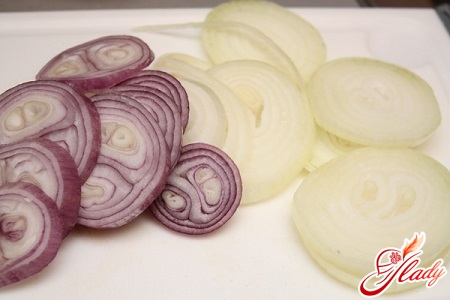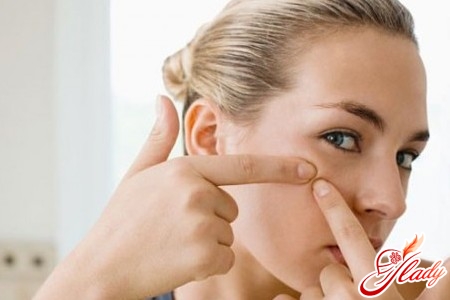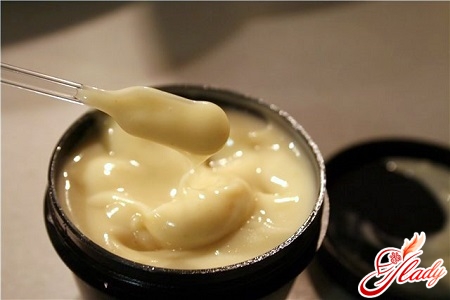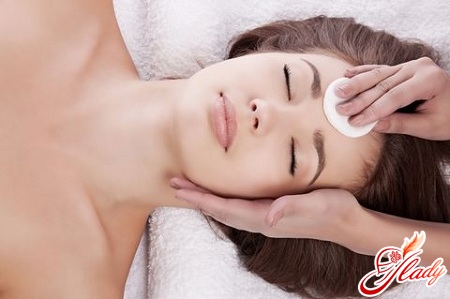 Allergy urticaria can almost be calledthe most common: according to doctors, every second person has encountered it at least once in their life. Urticaria occurs especially often in children, but adults are not immune from it either. This type of allergy received its name for a reason - skin rashes are very similar in appearance to nettle burns. In order for the disease not to take you or your loved ones by surprise, you need to have at least minimal information. Of course, you will have to see a doctor in any case, but it is not always possible to do this immediately. This means that you should know what to do in such a situation.
Allergy urticaria can almost be calledthe most common: according to doctors, every second person has encountered it at least once in their life. Urticaria occurs especially often in children, but adults are not immune from it either. This type of allergy received its name for a reason - skin rashes are very similar in appearance to nettle burns. In order for the disease not to take you or your loved ones by surprise, you need to have at least minimal information. Of course, you will have to see a doctor in any case, but it is not always possible to do this immediately. This means that you should know what to do in such a situation.
Causes of allergy development
The very first thing that needs to be done isthe appearance of hives - understand what caused the allergic reaction. If you do not eliminate the body's contact with the allergen, trying to get rid of the allergy will be as useless as fighting windmills. Of course, in some cases, only an allergist can diagnose the exact cause, but most often you can guess the cause yourself.
- Food
Food products provoke allergieshives in about half of all cases. In principle, an allergy can be provoked by absolutely any food product, but most often it is fatty fish, sweets, honey, nuts, citrus fruits, artificial preservatives and dyes. Therefore, if you encounter an allergy, carefully analyze the menu for the last 24 hours.
- Pharmacological preparations
The share of allergic reactions caused by takingmedications, account for up to 30 percent of all cases. Most often, allergies are caused by antibacterial drugs, vitamin and mineral complexes and, by the way, birth control pills. If you suspect that the allergy was caused by medications, immediately stop taking them and tell your doctor.
- Pollen of plants
Almost any pollen can cause allergiesplants. True, most often allergies in such cases make themselves known a little differently - runny nose, watery and itchy eyes, cough and difficulty breathing. However, the possibility of allergic urticaria cannot be ruled out - everyone's body is different. It is quite possible that yours decided to react to the allergen in this way - skin rashes.
- Wool and saliva of animals
Allergists very often diagnosepeople are allergic to saliva and/or animal hair - cats, dogs, guinea pigs, hamsters. Moreover, there can be an allergy to any animal, or to just one. In some people, such an allergy can manifest itself as a cough, runny nose and other symptoms, and in others - skin rashes.
- Physical impact
But physical impact on the skin is very rarefalls under suspicion. Which, however, is not surprising - well, who would think of blaming the sun or frost for the development of hives? In fact, an allergic reaction to sunlight - as well as to high temperatures and frost - is a phenomenon that occurs very, very often. And such an allergy can arise at any time, even if nothing like this has happened before.
- Cosmetics and household chemicals
It would seem that for modern housewives in our timepractically paradise - there are so many household chemicals that make life easier. Here you have washing powders, dishwashing detergents, glass cleaners, floor cleaners - you can't even list them all. But very often contact with this miracle of the chemical industry leads to the development of very severe allergic urticaria. Moreover, all of the above is true not only for household chemicals, but also for cosmetics. Face wash, cream, deodorant - there are so many cosmetics in a woman's handbag? And almost any of these products can provoke an allergy.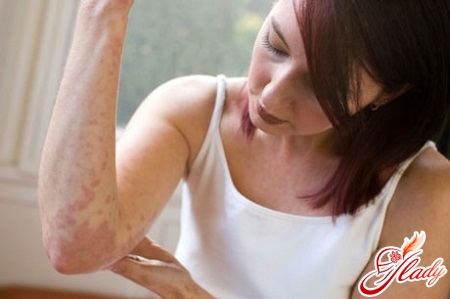
Symptoms of urticaria
A rash characteristic of an allergy called urticaria,is very specific - if you see it at least once, you will never be mistaken. Well, for those who have not yet had the good fortune to see a urticaria rash with their own eyes, we will tell you about the clinical picture of this allergic reaction. When urticaria develops, the rash rises quite strongly above the surface of the skin - by 3-5 millimeters. The rash itself has the appearance of clearly defined blisters, exactly like from contact with nettles. These blisters can have a wide variety of shades - from pale pink to bright red. This rash is characterized by the following feature - if you press on the blister, it will acquire a normal skin color and disappear. But as soon as you let go, it will immediately appear again. The size of the blisters can also be very different - from a couple of millimeters to several centimeters, and the number of rashes themselves can vary from single to numerous, covering almost the entire surface of the skin of the body. As a rule, if there are many rashes, they merge into huge spots, up to several tens of centimeters in diameter. It is probably superfluous to say that rashes with urticaria itch unbearably. Depending on the time during which the rashes persist, doctors distinguish two forms of the course of this disease:
- Acute form of urticaria
With this form of the disease, the symptomsdevelop very, very quickly - within one hour of contact with the allergen. As a rule, there are a lot of blisters, they are large in size and itch very badly. The symptoms disappear just as quickly - within a maximum of 24 hours after the allergen is eliminated.
- Chronic form of urticaria
If you are "lucky enough" to encounterwith chronic allergy urticaria, the course of the disease will be somewhat different. Firstly, the disease develops gradually - every day you will find new rashes, and the old ones will disappear. Although, of course, there are much fewer rashes in the chronic form than in the acute form. Such chronic urticaria can persist for a very long time - several weeks and even months. Most often, middle-aged women suffer from such allergic dermatitis.
Pseudoallergic urticaria
Very often doctors have to differentiateallergic urticaria from pseudoallergic. In the second case, the development of skin rashes occurs not due to exposure to allergens, but due to the presence of certain diseases. Such diseases include:
- The presence of parasites in the body.
- Hepatitis A and B.
- Tuberculosis and septicemia.
- The presence of tumors in the body - both benign and malignant.
- Problems with the endocrine system.
- Lupus Erythematosus, rheumatoid arthritis.
Externally, this is pseudo-allergic urticariais practically no different from the truth. True, the blisters are a little smaller in size, and they are almost always localized on the back and stomach, while with allergic urticaria the entire body is affected without exception. However, only a doctor can accurately identify the type of urticaria, of course.
Diagnosis of allergic urticaria
There is nothing complicated in diagnosing urticaria andAny medical student will be able to distinguish it from any other skin rash. However, this is far from the most important task - it is much more important to find out why this allergic reaction made itself known. After all, without knowing the cause, it is difficult to limit contact with the allergen, and therefore, the recurrence of an attack of urticaria.
- Location of rashes
First of all, the doctor will pay attention to the fact thatwhere the urticaria rash is located - if on open areas of the body, you can suspect a cold allergy, or an allergy to sunlight. Of course, the anamnesis is taken into account - if you have not been outside for several days, you can hardly blame the weather, whatever it may be.
- Talk with the patient
By the way, collecting anamnesis is very important -An allergist should very carefully question the patient or his parents if allergic urticaria has developed in a child. Perhaps the person has recently eaten something unusual, some product that is not in his daily diet? Or maybe they changed their washing powder? Or bought a new hand cream? It is very important to remember all the nuances - there are no trifles and cannot be, so tell the doctor even about things that, in your opinion, are not worth any attention. Very often, such a conversation allows you to quickly identify the source of troubles - the allergen that provoked the allergic urticaria.
- Allergic tests
In the event that the conversation with the patient turned out to beIf the results are inconclusive, the doctor will most likely decide on the need for allergy tests. This may be a blood test to detect allergens, or skin tests - depending on the specific case. Skin tests are done as follows: using a special needle, the doctor makes scratches on the surface of the skin. Then, a saline solution containing various allergens is applied to them. After about 20 minutes, the doctor will evaluate the results - if the skin around the scratch is red and / or swollen, the person is allergic to the substance dissolved in this liquid. Unfortunately, there are often cases when the true cause of the allergic reaction cannot be established. If a person suffers from chronic urticaria, the diagnosis should be more extensive. First, it is necessary to pass a general urine and blood test, liver function tests, tests to ensure the absence of parasites, exclude dysbacteriosis, conduct an ultrasound examination of the internal organs, an X-ray of the lungs and a number of other studies. Such a detailed examination is necessary in order to identify the disease that provokes the development of urticaria.
Treatment of allergic urticaria
You can't ignore allergic urticariain no case - treatment should be started immediately after the first symptoms of the disease appear. We have already mentioned above that it is not so difficult to get rid of true allergic urticaria in acute form if you know what to do.
- Elimination of contact with an allergen
The first and most important condition for treatmenturticaria - eliminating the allergen. Of course, this can only be done for sure if you know exactly what you are allergic to. Otherwise, eliminate all possible allergens, which have already been mentioned.
- Antihistamines
If there are a lot of rashes, it is not worth itrefuse to take antihistamines. Ideally, an allergist should help you choose the medicine. But if you do not have the opportunity to consult a doctor, buy Tavigil or Suprastin at the pharmacy. Strictly adhere to the recommended dosage - exceeding it has a fairly negative effect on the body. Moreover, taking the drug should be a one-time, emergency aid. You can continue treatment only after visiting a doctor, if necessary.
- Local funds
The rash causes very severe itching, it is hard to bear.which is very, very difficult. To get rid of it, you can use regular zinc ointment, which is sold in every pharmacy. Just apply a thin layer of ointment to the rash and leave for 20-30 minutes, then rinse with water. If the situation is critical, the doctor will prescribe you more potent ointments, which include corticosteroids. There are many different traditional medicine recipes that promise quick relief from allergic urticaria. Doctors are categorically against this type of treatment, because almost all recipes are based on the action of certain medicinal plants. And any plant without exception is a potential allergen. Moreover, with urticaria, an allergy can be caused even by a well-known plant that you have repeatedly used. Therefore, refuse traditional medicine. The only remedy that is worthy of your attention is compresses with baking soda, which are very good at relieving even the most severe itching. The compress is made simply - You will only need gauze and baking soda. Cut several small napkins from the gauze and prepare a saturated soda solution - dissolve five teaspoons of soda in a glass of water and mix thoroughly. Soak a gauze napkin in the soda solution and apply to the blisters, leave for 10-15 minutes. If the napkin dries out earlier, change it to a damp one. After the procedure, do not take a shower for at least another hour. The itching will disappear quite quickly and return in about 3-4 hours. If this happens, you can do a soda compress again - it is completely safe for health. Treatment of chronic allergic urticaria is a rather labor-intensive and lengthy process, sometimes taking more than one month. It goes without saying that the treatment regimen should be selected exclusively by an allergist. Most often, this is taking antihistamines, external agents, general strengthening measures and, of course, eliminating contact with the allergen. In any case, the treatment will be prescribed by a doctor, taking into account the specific situation.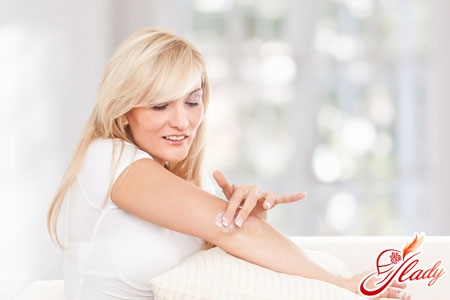
Prevention of allergic urticaria
Start prevention of allergic urticariaIt is possible even before the baby is born. A pregnant woman should completely exclude from her diet all products that can provoke the development of an allergic reaction. Such products include:
- Fish and all other seafood.
- Sweets and especially chocolate.
- Natural honey and other products of beekeeping.
- Preservatives and dyes of artificial origin.
- Eggs and chicken.
- Carbonated drinks, excluding mineral water.
Moreover, a woman should not follow this dietnot only during pregnancy, but also throughout the entire period of breastfeeding. Moreover, the longer the breastfeeding, the less likely it is that any allergic reaction will develop throughout the child's future life. In addition, it is necessary to try to avoid contact with various potential allergens - soft toys, household chemicals, food, animals. Of course, it is impossible to live in complete isolation, but it is quite possible to take certain measures. Wash soft toys more often so that dust does not accumulate in them, use rubber gloves when working with household chemicals, try not to change your usual cosmetics, to which you definitely do not have an allergic reaction. In the event that you cannot completely eliminate contact with the allergen, the doctor will select suitable antihistamines for you, which you will have to take for a long time. In addition, it will not be possible to avoid strictly adhering to a hypoallergenic diet, otherwise all efforts will be in vain. And, of course, you should always have ointments and creams on hand that will relieve itching in the event that you still cannot avoid the development of a new attack of allergic urticaria. We recommend reading:





